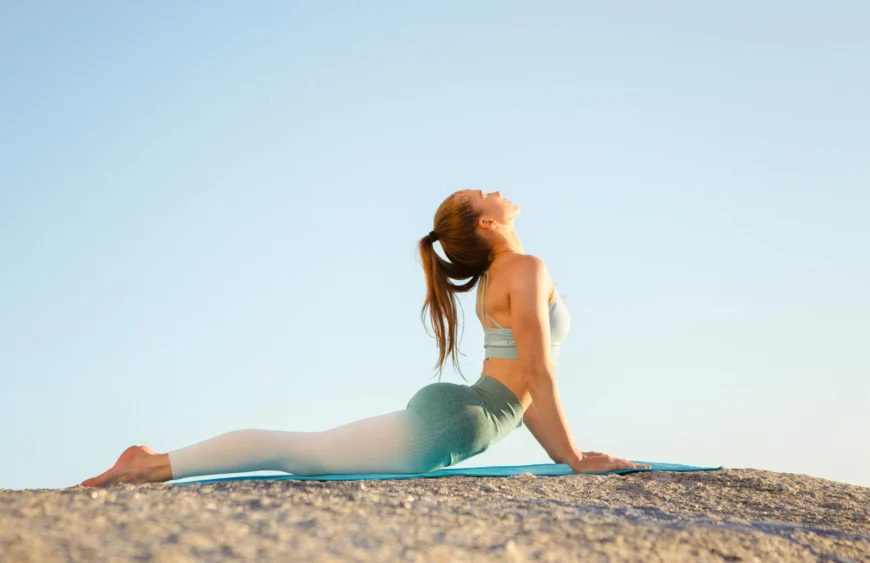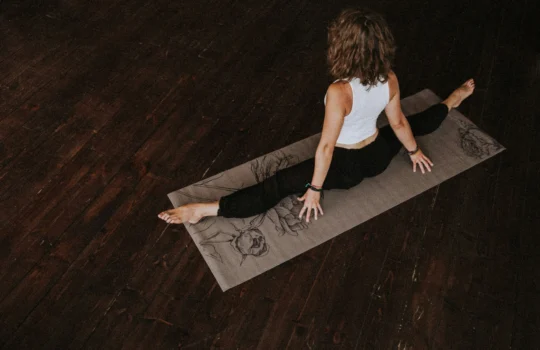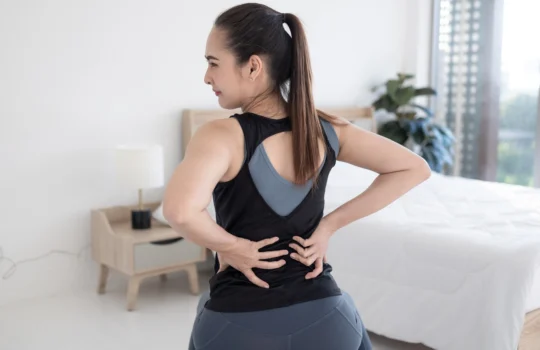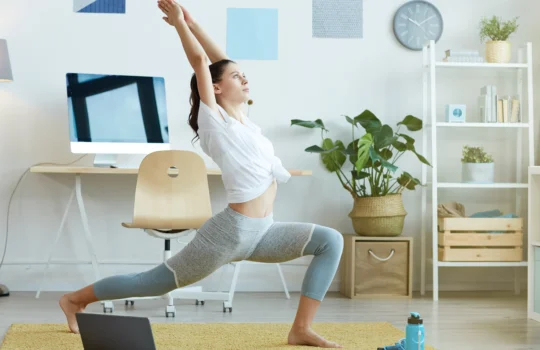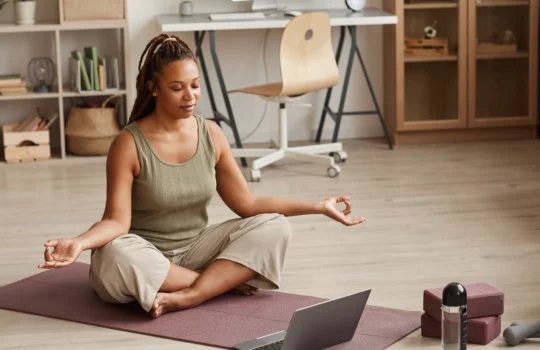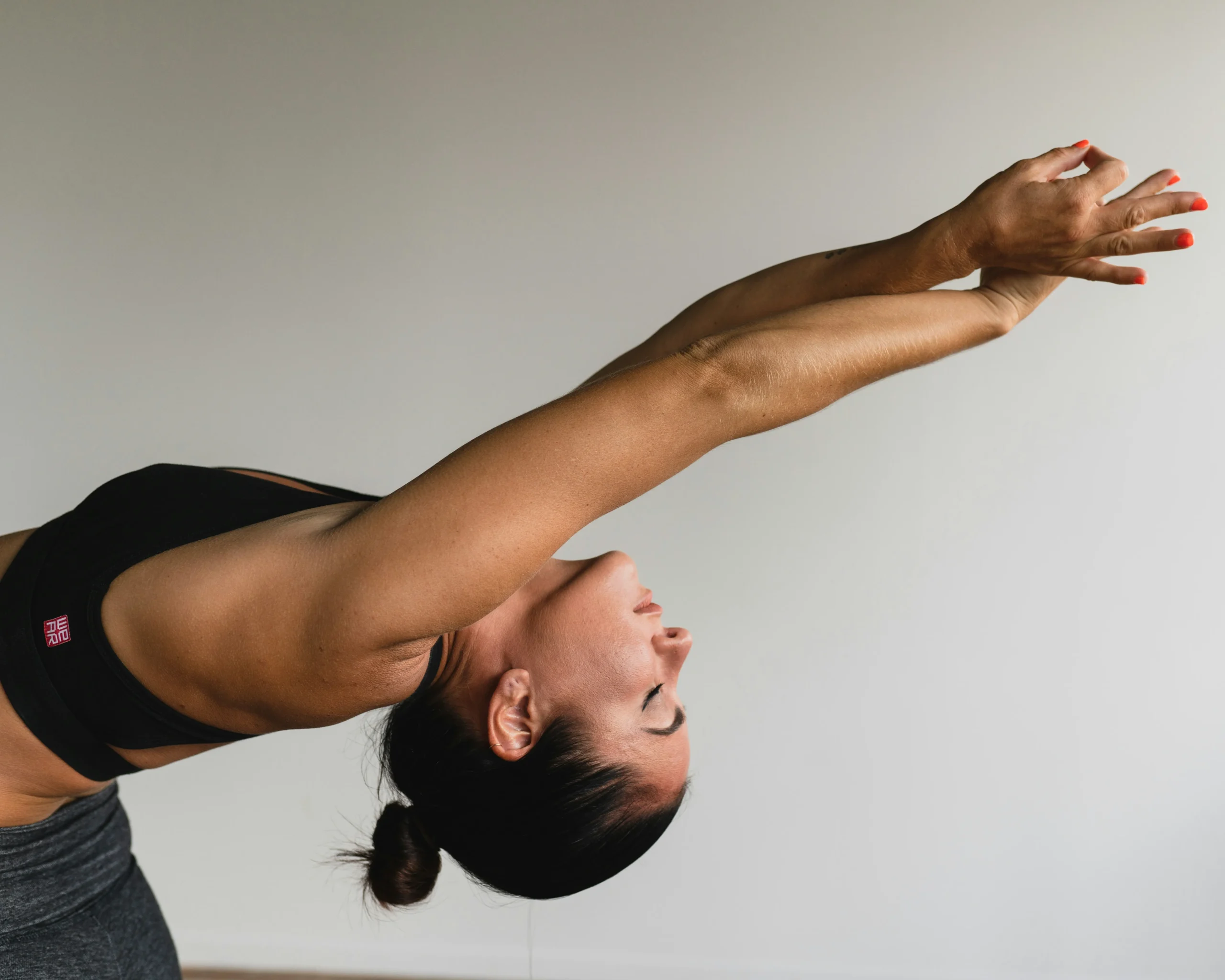Welcome to the vibrant world of Vinyasa Flow, a dynamic style of yoga that marries movement with breath to create a fluid, dance-like sequence that can energize your body and calm your mind. Whether you’re a seasoned yogi or just stepping onto your mat for the first time, understanding the nuances of this practice can significantly enhance your experience.
Today, we’re diving into the “10 Must-Know Do’s and Don’ts of Vinyasa Flow,” a guide filled with practical advice to help you avoid common pitfalls and embrace the full potential of your yoga journey. Get ready to transform your practice!
Table of Contents
Do Warm Up Properly
Before you flow into your first Downward Dog of the day, let’s talk about warming up. Just like you wouldn’t sprint without loosening your legs first, diving into Vinyasa Flow without preparing your body is a big no-no. Why? Because a good warm-up reduces the risk of injuries and ensures your muscles are prepped and ready to go!
Here’s how to warm up like a pro:
- Start with Gentle Stretches: Begin with non-strenuous stretching to wake up your major muscle groups. Focus on areas like your wrists, shoulders, and ankles, which play pivotal roles in yoga.
- Engage in Dynamic Movement: Activate your joints with rotations—neck rolls, arm circles, and ankle rolls. These movements help lubricate your joints, making your flow smoother and more comfortable.
- Include a Few Sun Salutations: Sun Salutations are the bread and butter of Vinyasa yoga. They slowly raise your heart rate, increase circulation, and bring warmth to every corner of your body. Start slow, and allow your breath to lead your movements.
By dedicating just a few minutes to properly warm up, you set the stage for a safer and more effective session. Your body will thank you with increased flexibility and a greater ability to perform those beautiful Vinyasa sequences. Now, let’s breathe deep and flow into a fantastic practice that respects our body’s needs and limits!
Do Focus on Your Breath
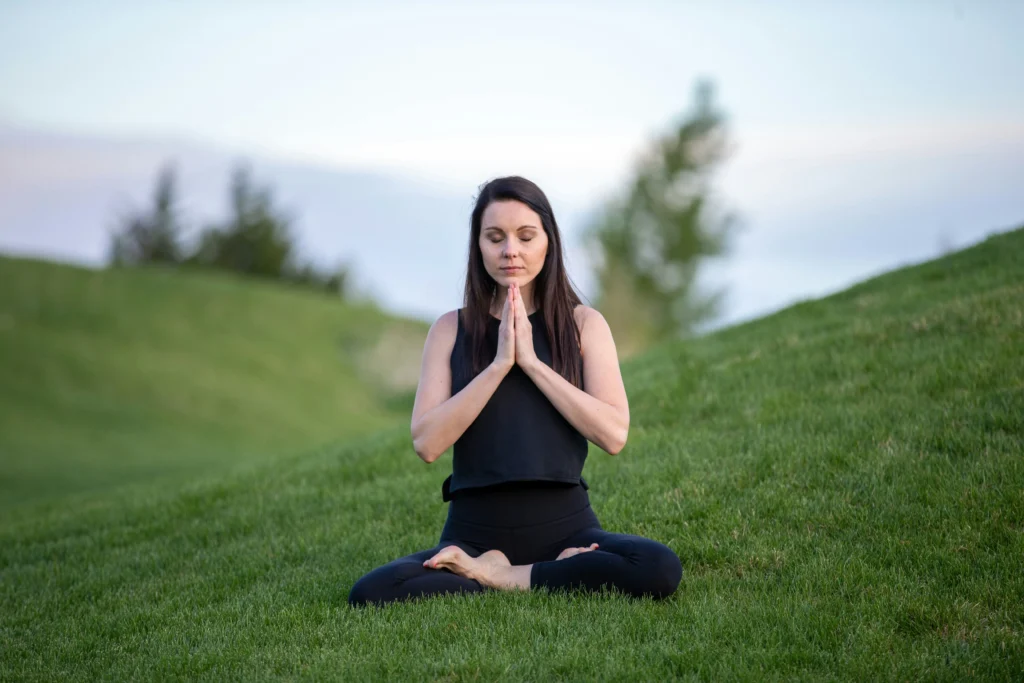
Breathing isn’t just about keeping you alive—it’s the cornerstone of Vinyasa Flow and what sets it apart as a transformative practice. In Vinyasa, your movements are intimately tied to your breath, creating a rhythm that propels your practice from one pose to the next with grace and intention.
Here’s why you should keep your breath in check:
- Create a Mindful Connection: By focusing on your breath, you cultivate mindfulness, staying present in each moment of your practice. This connection helps you move intentionally and can deepen the meditative aspect of yoga.
- Power Your Movements: Think of your inhales and exhales as the fuel for your yoga engine. Inhaling can help you expand and reach further, while exhaling allows you to deepen into stretches and maintain balance and strength.
- Reduce Stress: Consistent, deep breathing is a proven stress reliever. It signals your nervous system to calm down, reducing tension and promoting a sense of peace.
Breathing tips for your Vinyasa flow:
- Inhale to Prepare: Use your inhalations to prepare for transitions and to extend your body upward or outward.
- Exhale to Deepen: Use your exhalations to help deepen your poses, fold forward, or twist more profoundly.
- Continuous Breath: Keep your breathing even and steady. If you find yourself holding your breath or breathing too quickly, slow down your flow to regain control.
Mastering the art of breathing will not only enhance your yoga practice but also improve your focus and calmness in daily life.
Read more about purifying breath technique for beginners.
Do Practice Regularly
Consistency is key in any form of exercise, but in Vinyasa Flow, it’s particularly crucial. Regular practice builds muscle memory, strength, flexibility, and a deeper understanding of the poses. More importantly, it fosters a lasting yoga habit that can significantly impact your physical health and mental well-being.
Benefits of a regular Vinyasa Flow practice include:
- Increased Strength and Flexibility: Frequent practice helps your body become stronger and more supple. Each session builds on the last, progressively improving your yoga skills.
- Enhanced Mental Clarity: Regular yoga practice is like a mental cleanse, flushing away the stress and clutter of everyday life and refreshing your mind for new challenges.
- Deepened Yoga Knowledge: The more you practice, the more you learn about your body and the subtleties of each pose. This knowledge can be incredibly empowering.
How often should you practice? Aim for 3-4 times a week to start. This frequency allows you to build strength and flexibility without overwhelming yourself. Remember, even a short session is better than none, so roll out your mat, and let’s flow!
Embracing these practices with dedication and mindfulness will not only enhance your Vinyasa Flow but also enrich your overall life experience. So breathe deeply, commit to your mat, and watch as the magic of regular practice unfolds in your life.
Do Listen to Your Body
One of the most empowering aspects of Vinyasa Flow is its invitation to tune into your body’s needs and responses. Listening to your body not only prevents injuries but also deepens your connection with yourself, enhancing your yoga practice.
Why listening to your body matters:
- Prevent Injuries: Understanding the difference between a good stretch and harmful pain is crucial. If a pose feels wrong, adjust it. Your body knows best.
- Enhance Your Practice: By paying attention to how each pose feels, you can make micro-adjustments that improve alignment and effectiveness.
- Increase Satisfaction: Yoga is not about enduring discomfort. It’s about finding balance and harmony. Adjusting your practice to suit your needs can make it more enjoyable and fulfilling.
Tips for tuning into your body:
- Start with a Body Scan: Before you begin, lie on your mat and mentally scan your body from head to toe. Notice any areas of tension or discomfort.
- Modify As Needed: Use modifications to make a pose more comfortable, or skip poses that cause pain.
- Check-In Regularly: Throughout your practice, periodically ask yourself, “How does this feel?” This habit keeps you engaged and responsive to your body’s changing needs.
Do Use Props If Needed
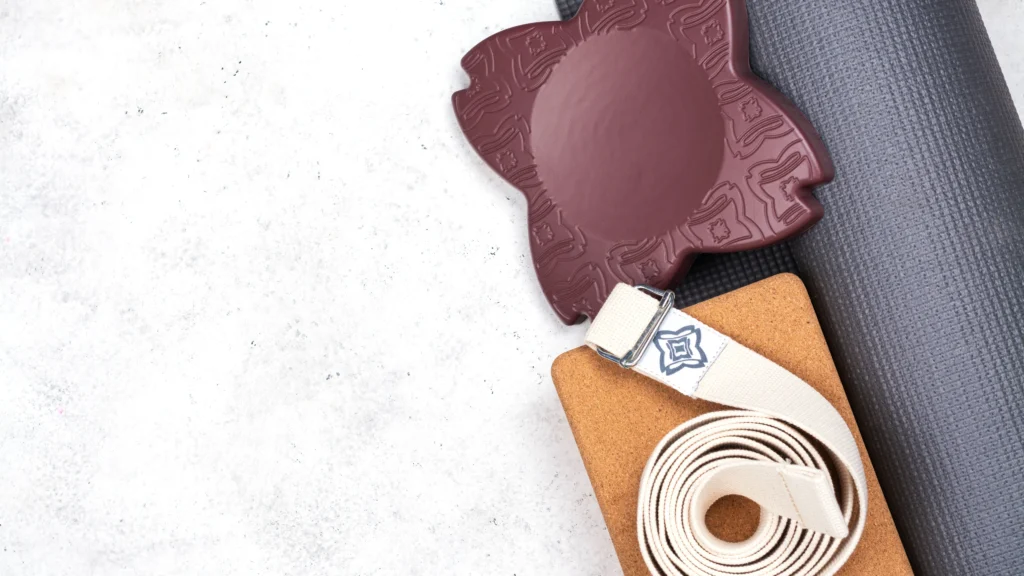
Props are not just for beginners; they are fantastic tools that can enhance the practice of yogis at all levels. Using props in Vinyasa Flow can help you achieve proper alignment, deepen stretches, and maintain poses longer without strain.
Benefits of using props in Vinyasa Flow:
- Improve Alignment: Props can help align your body correctly, which maximizes the benefits of each pose and avoids strain.
- Deepen Stretches: Props like yoga blocks or bolsters can help you safely deepen stretches, particularly in poses that feel just out of reach.
- Increase Accessibility: Props make challenging poses more accessible, especially if you’re dealing with flexibility issues or injuries.
Common props and how to use them:
- Blocks: Use them under your hands in a forward fold or under your hips in seated poses to provide support and stability.
- Straps: If you can’t reach your feet in a stretch, a strap can bridge the gap. They also help maintain alignment in poses like Dancer’s pose.
- Bolsters: Great for restorative yoga sessions within your Vinyasa practice, bolsters support the body in poses designed for relaxation and deep stretching.
Incorporating props into your practice doesn’t mean you’re taking it easy. It means you’re practicing smartly and respecting your body’s limits. Props can be your best allies in creating a balanced, effective, and sustainable Vinyasa Flow practice.
Embrace these practices to truly honor your body and its unique journey through Vinyasa Flow. Listening to your body and using props when needed can transform your practice from routine to remarkable, creating a deeper, more intuitive yoga experience.
Find yoga accessories and read summer’s most liked zen yoga accessories and equipment (For 2024!)
Don’t Rush Through Poses
In the rhythmic, flowing sequences of Vinyasa Flow, it can be tempting to keep up with the pace at the cost of your form. However, rushing through poses can significantly diminish the benefits of your practice and increase the risk of injury.
Here’s why taking your time matters:
- Enhance Mindfulness: Slowing down allows you to stay present and mindful during each movement. This focus can enhance your connection to the practice, allowing you to reap more mental benefits, such as reduced anxiety and increased relaxation.
- Improve Technique: Taking your time in each pose helps you focus on proper alignment and technique. This not only makes your practice more effective but also builds strength and flexibility more efficiently.
- Deepen the Experience: Slow and controlled movements allow you to explore the depth of each pose, understanding how it affects your body and mind, and noticing subtle shifts in your balance and breath.
Tips for not rushing:
- Follow Your Own Breath: Let your breath dictate the pace of your transitions and movements, not the other way around. If you find yourself out of sync, take a moment to realign your breathing with your movements.
- Use Counting: Counting breaths in each pose can help maintain a steady pace. Aim for at least three to five full breaths per pose, depending on the complexity and intensity.
- Practice Mindfulness: Remind yourself that yoga is not a race. The goal is to connect with yourself, not to finish first. Allow yourself to enjoy the journey of each session.
Don’t Ignore Pain
Pain is your body’s signal that something is wrong, and ignoring these signals during Vinyasa Flow can lead to serious injuries. Distinguishing between the normal discomfort of a muscle stretching and the sharp sting of something potentially harmful is crucial.
Here’s how to handle pain in your practice:
- Know the Difference: Learn to distinguish between the discomfort of pushing your limits and the pain that signals harm. Discomfort can often be a part of growth in yoga, but pain, especially sharp or sudden pain, should never be ignored.
- Adjust or Modify Poses: If a pose causes pain, try modifying it with the use of props, or choose an alternative pose that feels more comfortable. There’s no shame in adapting a practice to fit your body’s needs.
- Consult with Professionals: If pain persists, it may be wise to consult with a yoga instructor or healthcare provider to understand the source of your pain and the appropriate steps to take.
Mindset for managing pain:
- Listen Actively: Pay attention to what your body tells you during and after practice. Adjusting your practice based on these signals is key to a healthy and sustainable yoga journey.
- Embrace Rest: Give your body time to rest and recover if you experience pain. Rest days are just as important as practice days in achieving overall wellness.
By not rushing through poses and listening to your body’s pain signals, you safeguard your health and enhance the quality of your Vinyasa Flow practice. Remember, the ultimate goal of yoga is to nurture and strengthen, not just the body, but also the mind and spirit.
Don’t Forget to Hydrate

Hydration is key in any physical activity, but it’s especially crucial in Vinyasa Flow, where you’re constantly moving and generating heat within the body. Staying hydrated helps maintain energy levels, prevents muscle cramps, and aids in recovery.
Why hydration is essential for Vinyasa Flow:
- Boosts Performance: Proper hydration ensures that your muscles receive the oxygen they need, enhancing your strength and endurance throughout your practice.
- Facilitates Flexibility: Being well-hydrated helps keep your muscles and joints lubricated, making it easier to move into and hold poses.
- Aids in Detoxification: Yoga promotes the elimination of toxins through sweat. Drinking plenty of water helps flush these toxins out, aiding in overall detoxification.
Hydration tips for yogis:
- Before Class: Drink at least one glass of water an hour before starting your practice to ensure you’re hydrated from the start.
- During Practice: Keep a bottle of water nearby and take small sips throughout your session, especially if you’re practicing a vigorous Vinyasa flow or are in a warm environment.
- After Class: Rehydrate with water or an electrolyte-rich drink to replenish any fluids lost during practice.
Don’t Neglect the Cool Down
Just as a warm-up prepares your body for the activity ahead, a proper cool down is vital to restore and relax after your practice. Cooling down can prevent dizziness and muscle stiffness, and it helps transition your body back to a state of rest more gradually.
Importance of cooling down:
- Reduces Stress on the Heart and Muscles: Gradually slowing down your activity level helps regulate blood flow, which can prevent cardiovascular strain and reduce the risk of muscle cramps or discomfort.
- Enhances Flexibility: Incorporating stretching in your cool down can improve flexibility and decrease the risk of injuries.
- Promotes Relaxation: Ending your session with a cool down helps shift the body into a state of relaxation, enhancing the stress-relieving benefits of your practice.
Effective cool down techniques:
- Gentle Stretching: Focus on long, gentle stretches for all major muscle groups, especially those you worked the most during your session.
- Breathing Exercises: Return to a peaceful, deep breathing rhythm to calm the nervous system and deepen relaxation.
- Restorative Poses: Include poses like Child’s Pose, Supine Twists, or Legs-Up-the-Wall to encourage total body relaxation and integration of the benefits of your practice.
Don’t Compare Yourself to Others

In a world of social media and class environments, it’s easy to fall into the trap of comparing your yoga journey to that of others. Remember, Vinyasa Flow is a personal practice, and everyone’s body is unique.
Why you should focus on your own practice:
- Personal Progress: Everyone comes to yoga with different levels of flexibility, strength, and experience. Focus on your own progress and celebrate your own achievements.
- Enhances Self-Awareness: Paying attention to your own body and practice increases mindfulness and self-awareness, which are key benefits of yoga.
- Reduces Frustration: Comparing yourself to others can lead to frustration and demotivation. Embrace your individual journey to keep your practice enjoyable and rewarding.
Strategies to avoid comparisons:
- Set Personal Goals: Focus on personal goals rather than how you stack up against others. Whether it’s improving flexibility, building strength, or simply feeling more relaxed, keep your goals in mind.
- Practice Mindfulness: Stay present during your practice. If you find your mind wandering to comparisons, gently bring your focus back to your own mat.
- Celebrate Small Wins: Every small success is a step forward in your yoga journey. Celebrate these moments and use them to fuel your motivation.
By embracing these principles, you ensure that your Vinyasa Flow practice remains a positive, nurturing experience that contributes to both your physical and mental well-being. Drink up, cool down, and remember—your yoga journey is yours alone, uniquely beautiful and constantly evolving.
Conclusion of Vinyasa Flow Do’s and Don’ts
Congratulations on taking this deep dive into the “10 Must-Know Do’s and Don’ts of Vinyasa Flow.” By embracing these essential practices and avoiding common mistakes, you’re well on your way to a more fulfilling, effective, and safe yoga practice. Remember, Vinyasa Flow is more than just a sequence of movements; it’s a journey of self-discovery and personal growth. Each session is an opportunity to connect more deeply with yourself and to enhance your physical, mental, and spiritual well-being.
Whether you’re warming up properly, staying hydrated, or honoring your body’s unique needs, each element of your practice is a step towards a more balanced and harmonious life. Vinyasa Flow offers a beautiful blend of challenge and tranquility, strength and flexibility, and with the right approach, it can be a profoundly transformative practice.
What’s Next?
Now that you’re equipped with these insights, I encourage you to roll out your mat and put these tips into practice. See for yourself how they enhance your Vinyasa Flow experience. Remember, every day is a new chance to grow stronger, more flexible, and more centered.
Share your journey: What changes do you notice when you incorporate these do’s and don’ts into your routine? How does your body respond? I’d love to hear about your experiences and breakthroughs! Share your stories in the comments below or on social media. Your insights could inspire others in their own yoga practices.
Stay engaged: If you found this guide helpful, subscribe to our newsletter for more tips, tricks, and deep dives into yoga and wellness. Your path to personal wellness is unique, and we’re here to support you every step of the way.
Embrace your practice, embrace the journey, and remember—Vinyasa Flow is not just about the poses you can achieve; it’s about the peace and joy you cultivate along the way. Let’s flow together towards a healthier, happier you!

